Germanwings A320 crash: British ‘likely’ on plane
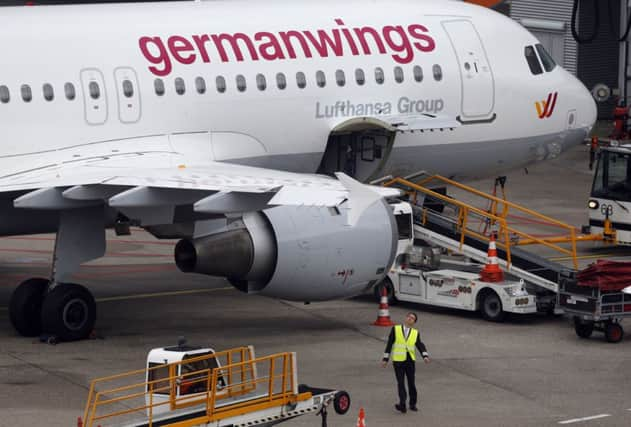

A woman believed to be living in the north west of England and her baby son are said to be among those on board, according to officials.
There were apparently no survivors from the 150 passengers - including 16 schoolchildren and two teachers - and six crew after the plane went into an eight-minute descent before crashing near Digne.
Advertisement
Hide AdAdvertisement
Hide AdSpeaking on Tuesday evening, Mr Hammond said: “This is a tragic incident for those involved and their families, I send my deepest condolences to those who have lost family or friends.
“I don’t want to speculate on numbers of British nationals involved until we have completed our checks on all the passenger information.
“However, based on the information available to us, it is sadly likely that there were some British nationals on board the flight. We are providing consular assistance and will give further help as more information becomes available.
“We are working closely with the French, German and Spanish authorities, and the airline, to establish the facts.
“The UK Air Accidents Investigation Branch, and UK disaster victim identification experts, are also standing by to offer assistance to the French authorities, if required.”
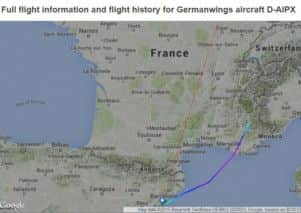

Crash investigators were last night trying to discover why a passenger jet plunged into the French Alps, with all 150 people on board believed to be dead.
A Germanwings flight from Barcelona to Düsseldorf rapidly descended for eight minutes before crashing without sending any distress calls.
The air disaster is believed to be the biggest single loss of life suffered by the 60-year-old Lufthansa Group, which owns the budget airline. One of the Airbus A320’s “black boxes” has been recovered from the Meolans-Revels crash site near the Pra Loup ski resort, which could give some of the first clues about what happened to flight 4U 9525. Scattered debris was visible across the mountainous area.
Advertisement
Hide AdAdvertisement
Hide AdSeveral larger pieces appeared to be part of the fuselage of the plane, including six windows.
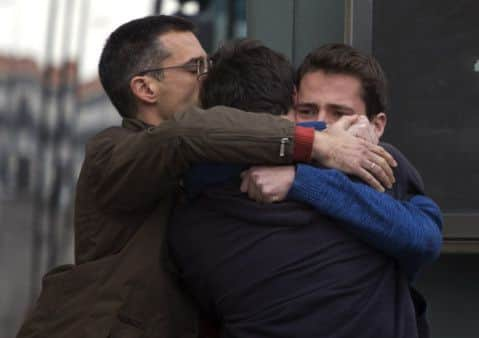

Gilbert Sauvan, president of the general council of the Alpes-de-Haute-Provence, said: “Everything is pulverised.”
He said the largest pieces of debris were the size of a small car.
There were 144 passengers on board, including two babies, with four cabin crew and two pilots. It is believed the passengers included 67 Germans and 45 Spaniards.
Ten helicopters and a military plane have been sent to the crash site, which is only accessible by air.
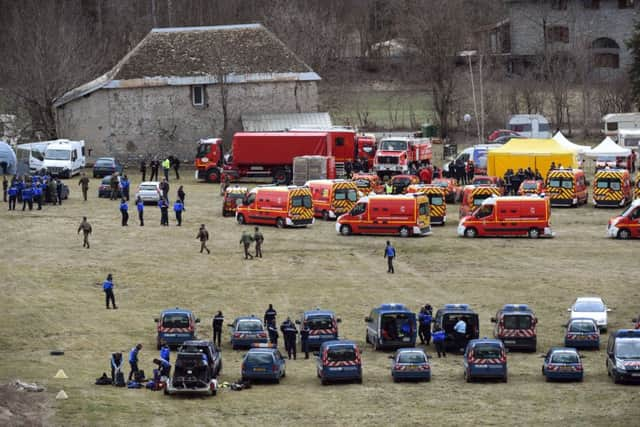

French interior ministry spokesman Pierre-Henry Brandet said he expected “an extremely long and extremely difficult” operation because the area is so remote.
Sandrine Boisse, of the Pra Loup tourism office, said: “It was a deafening noise. I thought it was an avalanche, although it sounded slightly different. It was a short noise and lasted just a few seconds.”
The Airbus A320 involved is one of the workhorses of European aviation, including an significant part of the EasyJet and British Airways fleets which serve Scotland.
Advertisement
Hide AdAdvertisement
Hide AdThe plane which crashed is believed to have previously flown on Germanwings’ Edinburgh-Cologne route, now operated by smaller A319 aircraft.
The plane took off from Barcelona at 9:01am British time, then started to descend at 9:47am after it reached its cruising height of 38,000ft.
French air traffic controllers lost track of the aircraft by radar at 9:53am, just before it crashed at an altitude of about 6,000ft.
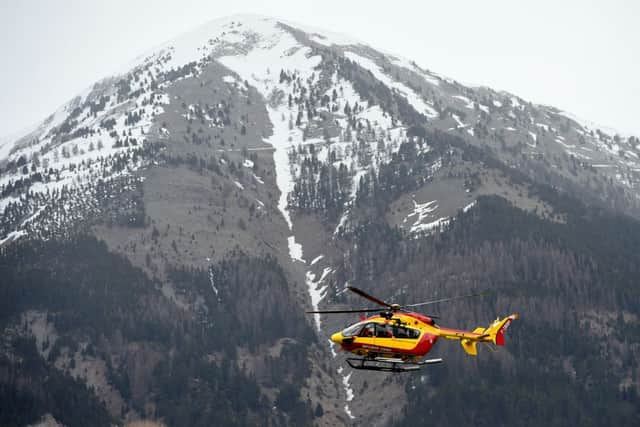

There were no reported weather problems in the area.
Captain Benoit Zeisser, of the nearby Digne-le-Bains police force, said there were some clouds but the cloud ceiling was not low.
A spokeswoman for the US National Security Council said there was no indication of terrorism .
Lufthansa vice-president Heike Birlenbach said: “For now, we say it is an accident.”
French interior minister Bernard Cazeneuve said a black box had been located at the crash site and “will be immediately investigated”.
He did not say whether it was a data recorder or a cockpit voice recorder.
Advertisement
Hide AdAdvertisement
Hide AdAviation experts said the safest part of a flight was when an aircraft was at its cruising altitude, when just one in ten fatal crashes occurred.
Dr Stephen Wright, an aviation lecturer at Leeds University, said the aircraft had had a rapid rate of descent, of 2,000-5,300ft a minute.
He said: “To descend from the scheduled flight plan, the crew would usually communicate this with air traffic control (ATC), normally giving a reason to why an urgent change of the plan is necessary.
“ATC would need to grant permission for the change, to keep other aircraft in the area safe and away from the aircraft in difficulty.”
The owner of a French Alpine camping ground said he heard loud noises in the air before the crash. Pierre Polizzi said: “There are often fighter jets flying over, so I thought it sounded just like that. The noise was long – like eight seconds – as if the plane was going more slowly than a military plane.
“There was another long noise about 30 seconds later.”
A municipal sports hall at Seyne-les-Alpes, six miles from the Val d’Allos ski resort, was being set up to take bodies or survivors from the crash.
The 24-year-old aircraft had a normal service check in Düsseldorf on Monday and its last major check-up was in the summer of 2013.
Its captain had more than ten years’ experience working for Germanwings and Lufthansa.
Advertisement
Hide AdAdvertisement
Hide AdA school in Germany was “assuming the worst” after it confirmed 16 of its students, thought to be aged 15-16, and two teachers, had boarded the flight.
German chancellor Angela Merkel, who is due to visit the crash site today, said: “We still don’t know much beyond the bare information on the flight, and there should be no speculation on the cause of the crash.
“The crash… is a shock that plunges us in Germany, the French and the Spanish into deep sorrow.”
She said her thoughts were “with those people who so suddenly lost their lives, among them many compatriots”.
French president François Hollande called the crash “a tragedy on our soil”.
Airline chief executive Carsten Spohr said: “If our fears are confirmed, this is a dark day for Lufthansa.”
The last time a passenger jet crashed in France was the Concorde disaster in 2000, which left 113 dead – 109 in the plane and four on the ground.
EasyJet and British Airways said they had not made any changes to aircraft checks and maintenance, and were awaiting any instructions from aviation safety authorities.
Advertisement
Hide AdAdvertisement
Hide AdMany of BA’s 61 A320s are maintained at its engineering base at Glasgow Airport.
A spokeswoman for EasyJet said: “Safety is our highest priority.”
ANALYSIS
Graham Braithwaite: A320: A ‘fantastic’ aircraft with safety record to match
At the moment, there is very little information to go on and that is likely to be the case for some time. There will be a lot of speculation from various commentators and so-called experts, but the primary focus of the authorities will be rescue and recovery. The investigation will be secondary to that, but investigators will already be travelling to the scene.
The A320 is a highly successful design, operated throughout the world. A fly-by-wire aircraft, computers and electronics activate the flying controls rather than physical connections. This ensures it doesn’t operate outside a safe flying envelope.
The automation supports and, on occasion, protects the pilots from unsafe situations.
There is nothing about the A320’s history or design that would draw suspicion at this point. Its operating philosophy is common to all modern Airbus aircraft – which are popular with passengers and pilots alike.
Early problems were in part due to pilots changing from classic aircraft to the Airbus philosophy, but this is a fantastic aircraft. Its sales record backs this up – if it had a bad safety reputation, it would simply not have sold.
• Graham Braithwaite is professor of safety and accident investigation at Cranfield University